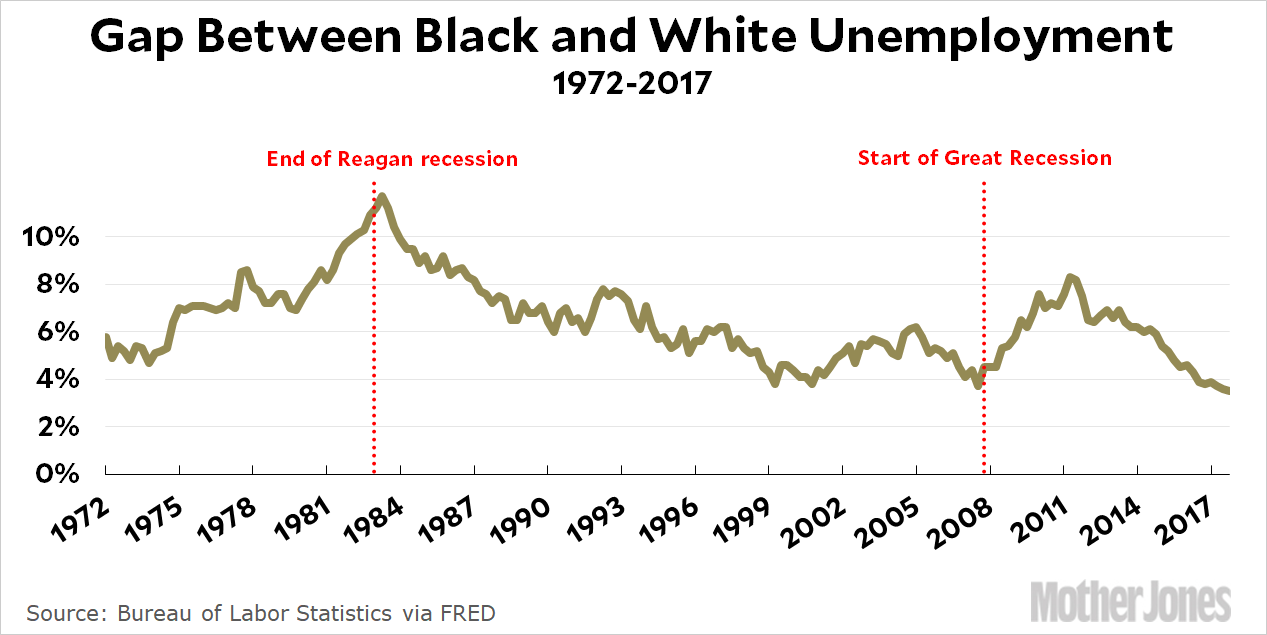Just in case you’re interested in the reality-vs-fantasy quotient of Donald Trump’s latest claim that he’s been great for black unemployment—and I admit there’s no reason you should be—here’s the gap between the black and white unemployment rates:

It’s been falling ever since the end of the Great Recession, and nothing much changed when Trump became president. It’s fallen a little bit more since his inauguration, but that’s all.
On the bright side, this really is the lowest the gap has been since BLS started keeping records by race in 1972. In fact, the long-term trend is kind of interesting:

Ever since the end of the Reagan recession, the black-white unemployment gap has been on a pretty steady downward path that’s interrupted like clockwork by every recession. When times are bad, blacks are laid off at higher rates than whites, and only after the economy has started expanding do blacks make up their losses. The good news is that during economic expansions, the gap has been in the 4-5 percent range for the past two decades. The bad news is that the gap has been in the 4-5 percent range for the past two decades.


















